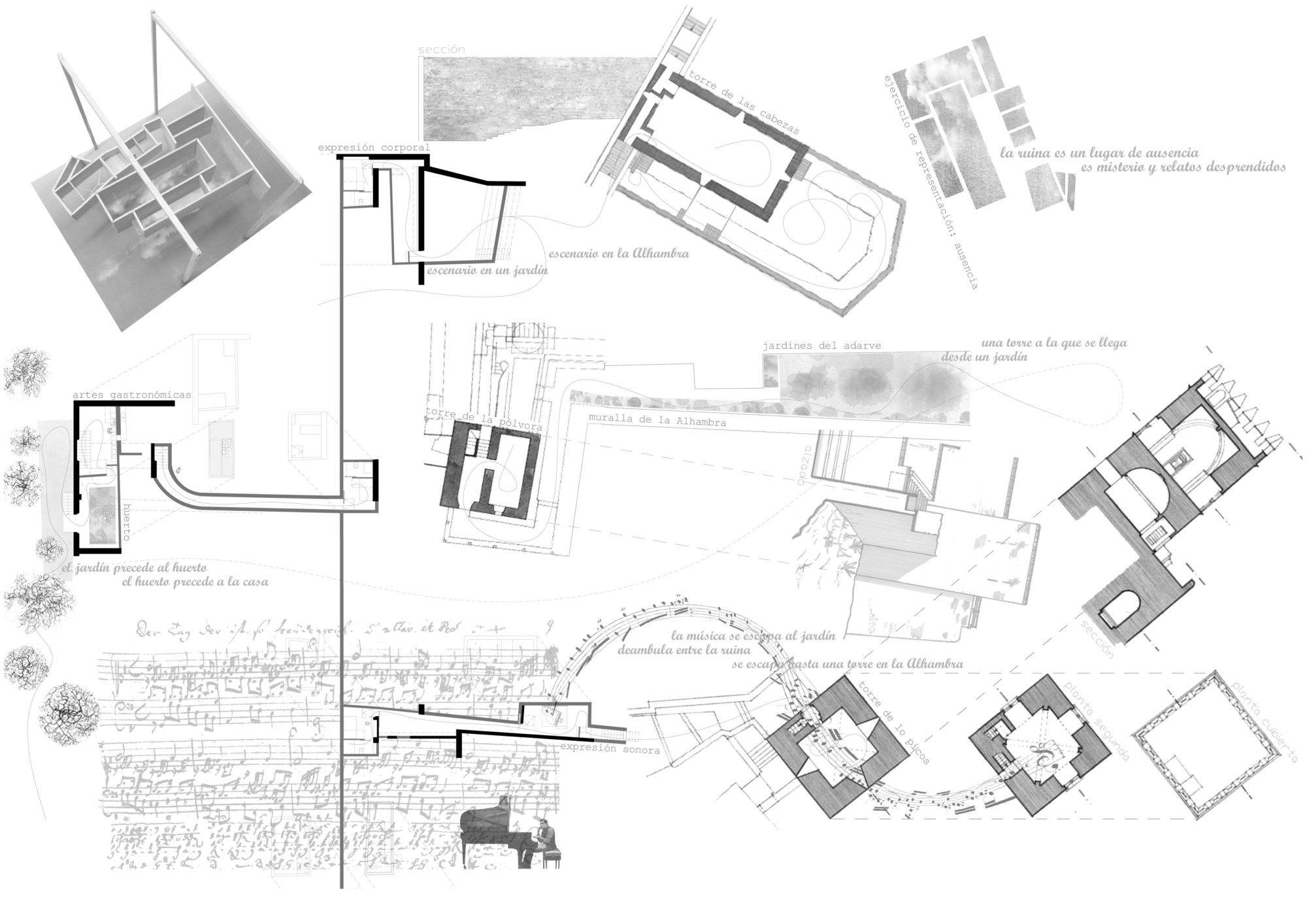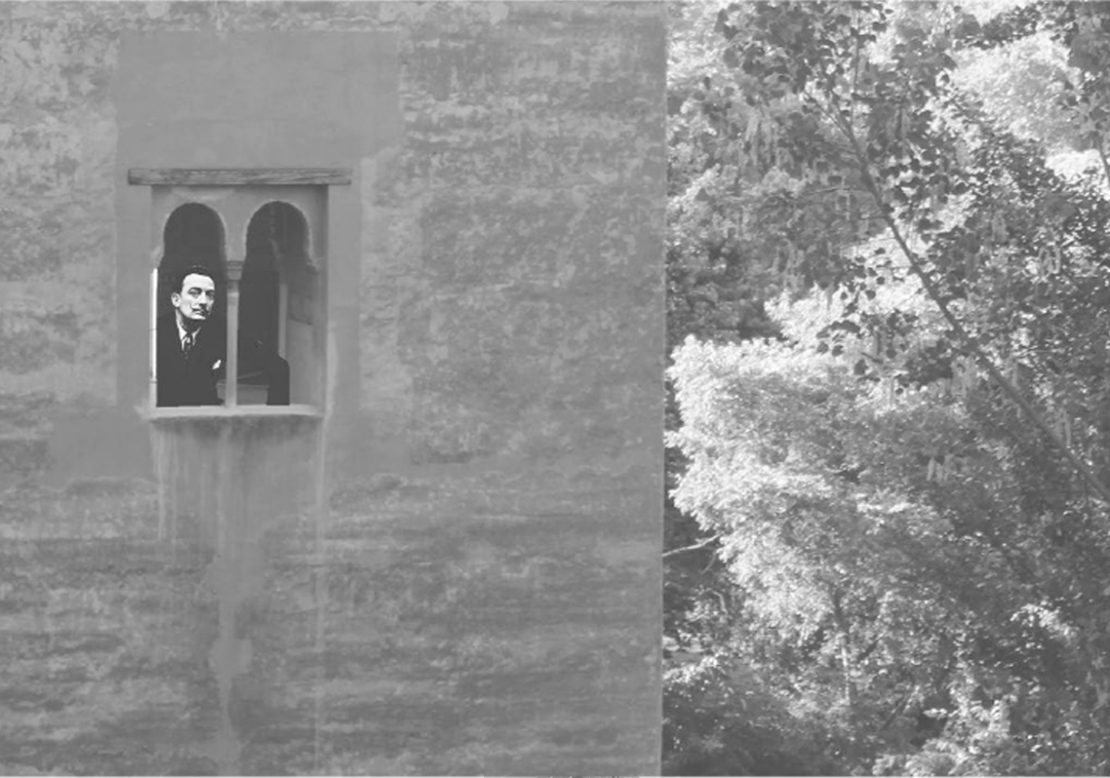Intervention in a ruin inside the Alhambra
Alejandro Infantes


Cependantcela se détruit, celapasse, bientôtcela sera
passé.
Diderot
Ruin (From lat. ruına, ruere).A fallen, wrecked, or decayed
condition.
The Palace of Charles V in the Alhambra is a past simple of how an
architectural project can be a ruin as final product, not due to
the passing of time but for its unfinished condition during almost
300 years, harbouring in the upper level a series of roofless
rooms –we could even think that they have .
Unfinished architecture, that is to say, ruin.This work tries to
find in ancient ruin a leitmotif; a situation that is able to
generate new architectures addressing one of the sides of a
problem that draws a number of landscapes, ultimately Ruin
Landscapes.
The program is a residence for artists in Granada in a place that
has been a house, a museum and a photography atelier. Nowadays
almost the totality of the roofing has fallen and the vegetation
colonizes the rooms, it is a ruin inside the Alhambra. We could
say that this state of ruin is in most of the cases linked to the
experience of being unable to differentiate between in and out:
when the architecture is open sky. Entering becomes leaving and a
peculiar atmosphere seizes each wall. There is something that is
extracted from these perceptions, in a place understood by the
addition of patios; an oblivion aesthetic redeveloped not only
through the new architecture but also in the program.
Among the remains of the Meersman Museum the formation of a raw
architecture is proposed, daughter of the ruin, mirror of the
Alhambra. It takes over abandoned rooms and a garden in addition
to the atmosphere of the place. Facing the project from the
occupation and extension of the existing, a number of enigmatic
places appear. There are patiosno window opens to, or stolen
towers of the Alhambra.
Living under the open sky and sharing a place related to the
Alhambra are the experiences that each of the guests would
possess. Thus every space is a reflection of a tower in the
palatine city, which, almost in a plunder or insolent
appropriation, conforms a diachronic story between the artists and
the monument. The new architecture inherits roofless rooms
creating a façade that looks to the sky fabricating experiences in
which the guest nearly has to find out the way to colonize his or
her own space.
The program is conditioned by the remembrance of the ruin and the
arrival of the eight artists related to eight fields of art and
knowledge. They are meant to produce a work during a year
concerning the Alhambra. Corporal expression, gastronomy, music,
written expression, audio-visual, architecture, fine arts and
historical knowledge are fields involved. Collision between each
one of these fields is sought, but also confrontation with the
monument, something pursued by the occupation of eight towers of
the Alhambra –presently disused– as ateliers for the guests. The
possibility to escape from the building limits generates a direct
artist-object of study relation, in a string of trips to secret
places.
The result is presented as a raw architecture, with finishing,
that ventures to answer how to intervene in a ruin.
Intervention in a ruin inside the Alhambra
Author:
Alejandro Infantes
2016
